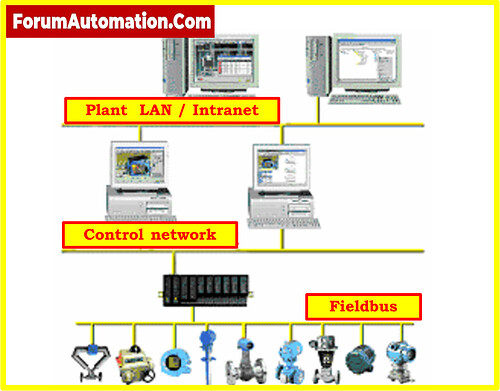What is foundation field bus in instrumentation? The foundation fieldbus is a serial, two-way, all-digital network that is used as the foundation for a plant or factory automation environment.
It is perfect for functions requiring both basic and sophisticated regulatory control, as well as the majority of the discrete control involved with those functions.
Two similar FOUNDATION fieldbus implementations have been introduced to address various demands in the context of process automation.
Different physical media and communication speeds are used in these two systems.
H1 links to field devices and operates at 31.25 Kbit/sec. It utilizes conventional twisted-pair wiring to deliver power and communication. The most widely used implementation at the moment is these H1.
HSE (High-speed Ethernet) connects host systems, linking devices, gateways, and field devices utilizing common Ethernet cabling at a speed of 100 Mbit/sec.
What are the advantages of fieldbus over conventional concept?
- Point-to-point wiring, or one wire pair per device, is used with conventional analogue and discrete field instruments.
- Additionally, they are restricted to sending only one type of data over those wires, typically a process variable or control output.
- FOUNDATION fieldbus has none of those restrictions because it is a digital bus. wire with many drops.
- On a single pair of wires (referred to as a segment), FOUNDATION fieldbus can support up to 32 devices; the number increases if repeaters are employed.
- In practical use, 4 to 16 devices per H1 segment are more typical due to factors including power, process modularity, and loop execution speed.
- Therefore, using FOUNDATION fieldbus, you only need 60 to 250 wire pairs instead of the 1000 wire pairs needed for 1000 devices using conventional technology. That represents significant wire (and wiring installation) cost reductions. instruments with several variables.
- Multiple variables from a single field device can be handled by the same wire pair.
- One temperature transmitter, for instance, might transmit inputs from as many as eight sensors, saving money on both instrument and wiring expenditures.
- Additional advantages of consolidating many devices into one could be fewer pipe penetrations (for increased safety and decreased danger of fugitive emissions), as well as lower engineering expenses. .
- Conversation that is two-way. The information flow can now be two-way as well. For more precise control, a valve controller can accept a control output from a host system or other source and return the actual valve position.
- That would require an additional pair of wires in the analogue world. different kinds of information. Traditional analogue and discrete devices lack the ability to verify that they are functioning properly or that the process information they are transmitting is accurate.
- As a result, technicians spend a lot of time checking the functionality of the devices.
- However, FOUNDATION fieldbus devices can let you know if they’re functioning properly and whether the data they’re sending is accurate, unreliable, or ambiguous.
- By doing so, you can do away with the majority of routine checks and find failure circumstances before they become serious process issues.
